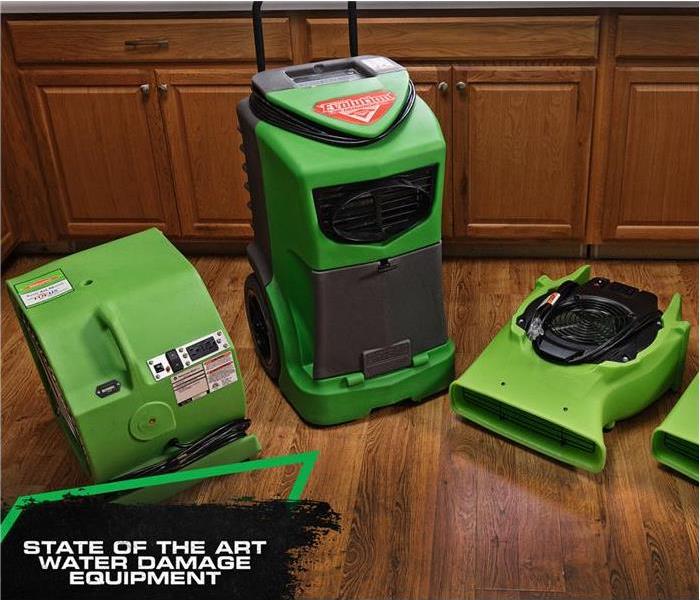Drying Structural Areas of Your Cocoa Home after Water Damage
7/26/2022 (Permalink)
 SERVPRO provides advanced equipment for water damage mitigation in Cocoa. "Like it never even happened."
SERVPRO provides advanced equipment for water damage mitigation in Cocoa. "Like it never even happened."
SERVPRO Follows Protocols to Facilitate Water Mitigation in Cocoa
Water becomes a menace when it spreads to unintended areas of a Cocoa property. Structural materials such as frames, studs, walls, and ceiling panels are particularly vulnerable to moisture exposure. Luckily, drying procedures can help prevent or reverse severe water damage. Drying structural areas to combat water damage requires combining several strategies, including demolition, manipulating airflow, and dehumidification.
When an incident at your Cocoa home leaves water damage, the impact can be selective, affecting contents such as furniture, or it can be restricted to structural areas such as walls, floors, or ceilings. The source of the leak plays a significant role in determining what is affected. Unlike contents that you can easily move to facilitate drying, wet structural materials are rigidly attached to the building. SERVPRO provides the expertise and technological resources that ease water restoration.
Removing moisture from structural materials occurs in different states, including liquid and vapor. Moisture has to move from the core of the material towards the surface, where it can escape into the air through evaporation. Although evaporation happens naturally, the standard rate is too slow, especially in concealed areas, so it is essential to find a way to fast-track it.
Ways to boost evaporation
- Improving airflow
- Humidity control
- Temperature control
If the air circulating over wet surfaces is constantly moving, it acts as a sweep moving the moisture escaping from the wet materials away, thus speeding up the drying process. Our SERVPRO crews set up several air movers to create a constant air stream over a damp surface. The air moving around the wet materials should have minimal humidity levels for sustained evaporation and faster drying. If deemed necessary, our technicians include dehumidifiers within the set-up of drying equipment. Temperature control complements the drying efforts by improving the capacity of air to hold moisture.
Reaching Wet Structural Materials
Structural materials such as drywall, floorboards, and ceiling panels are readily accessible, making it easy to execute the drying processes. However, the elements hidden within ceiling spaces, subfloors, and wall spaces are not readily accessible, so extra steps are necessary to facilitate drying. Our SERVPRO IICRC-certified technicians can punch vent holes or make flood cuts to create the required access to circulate dry air close to the wet materials. Vent holes are small openings, usually less than an inch in diameter, drilled through a wall to create access for circulating air inside the wall. Our technicians hook special wall ventilators through the holes to facilitate positive or negative air pressure into the cavity. We can rig various InjectiDry devices to optimize the drying time and result.
In some cases, materials may be readily accessible but have vapor barriers that impede drying. A vapor barrier is a material that does not let moisture through, or if it does, the rate is very slow. For example, wall surfaces coated in gloss paint or wallpaper. Defeating the vapor barrier is essential before drying can be successful. Our SERVPRO technicians use different workarounds against the moisture barriers, including modifying or removing the material. We can use a perforation roller to create tiny holes allowing faster moisture release. Stripping the surface, especially if the barrier is wallpaper is also helpful.
Other common vapor barriers:
- Felt paper under hardwood floors
- 4-mil polyethylene sheet under drywall
- Semi-gloss paint
SERVPRO of Central Brevard uses professional approaches to handle water damage making it "Like it never even happened." Call us at (321) 638-4947.

 24/7 Emergency Service
24/7 Emergency Service